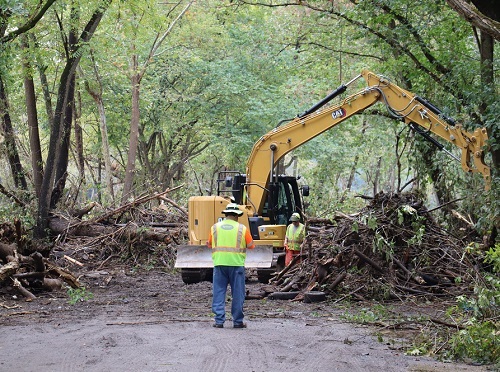A new Texas A&M Transportation Institute road safety study indicated that while the risk of death or injury due to motor vehicle crashes increased on Texas roads during the COVID-19 the pandemic, the number of actual motor vehicle crashes dropped across the state.
[Above photo vis the Texas DOT.]
The number of Texas traffic crashes in April dropped by almost 50 percent compared to 2017-2019 averages, according to a study by the Center for Transportation Safety at the Texas A&M Transportation Institute, with the number of fatalities also dropping by about 20 percent.

However, the report showed that while fewer crashes occurred early on in the COVID-19 pandemic, 50 percent more crashes resulted in a fatality during the period compared to previous years.
That dovetails with fatality-rate findings recently issued by the National Highway Traffic Safety Administration. Based on preliminary data, NHTSA noted that during the second quarter of 2020 – the height of the COVID-19 pandemic – traffic fatalities continued declining.
Overall federal data indicated that some 8,870 people died in motor vehicle traffic crashes during the second quarter of 2020: a decrease of about 3.3 percent compared to the second quarter of 2019, which translates into 302 fewer fatalities as compared to the same period in 2019.
However, as total traffic volume decreased by more than 16 percent in the first six months of 2020, that meant traffic fatality rate per 100 million VMT actually increased – jumping to 1.25 during the first half of 2020, up from 1.06 over the same period in 2019.

“Road safety is always our top priority, and while we are encouraged by today’s reports showing a continued decline in total fatalities in 2019 and into the first half of 2020, we are concerned by the trend since April showing an increased fatality rate,” noted James Owens, NHTSA’s deputy administrator, in a statement.
Meanwhile, TTI’s study found that while the numbers for both multi- and single-vehicle crashes were down by 55 percent and 23 percent on Texas roads, respectively, the proportion of crashes with at least one fatality rose by 14 percent for single-vehicle crashes and 59 percent for multi-vehicle crashes.

Robert Wunderlich, TTI’s senior research engineer, added in a statement that the proportion of urban multi-vehicle crashes that resulted in a fatality almost doubled.
He said two factors affect traffic crashes: exposure and risk. Exposure is the amount of travel, and risk is the chance that travel will result in a crash, injury or death. Because there was less exposure to risk in April with fewer drivers on the road, the number of crashes went down.
However, fatal crashes only dropped by 20 percent during that period, so the risk of a fatal crash was greater than normal.
“With fewer vehicles on the road in April, it makes sense that we had fewer multi-vehicle crashes,” Wunderlich explained. “And there is evidence that the relationship is exponential, meaning that decreases in volume can have a greater than proportional effect on crashes. The reduction in single-vehicle crashes is more likely to be proportional to the decrease in traffic.”
 Top Stories
Top Stories
USDOT Awards $4.2B to Major Transportation Projects
October 25, 2024 Top Stories
Top Stories

